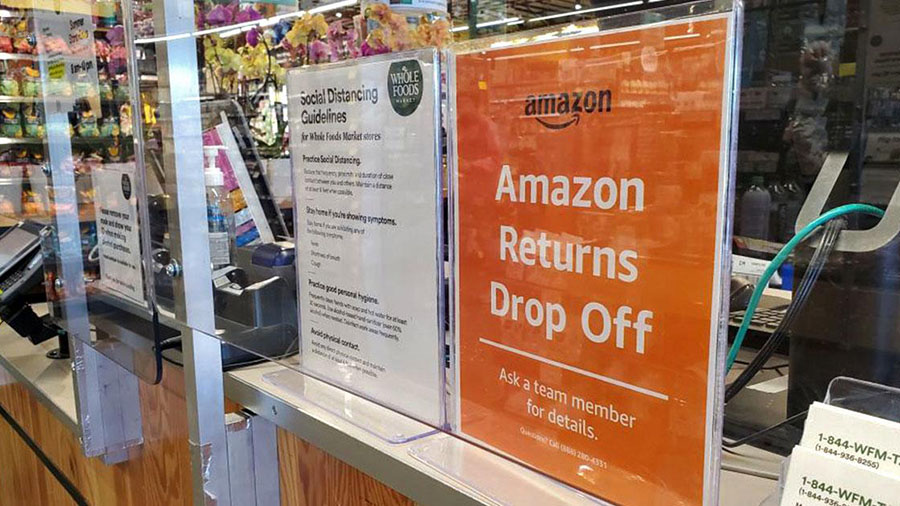Salesforce is reporting that the data in its system shows that holiday retail sales surged to a record $1.2 trillion globally and $282 billion in the United States, but high returns could dampen retailer overall profit margins.
The Salesforce report also indicates that the better-than-expected holiday shopping season, powered by a mobile and social commerce surge, increased consumer spending. The company also reported that shoppers have since returned $122 billion in merchandise.
“Both consumers and retailers leaned into the use of AI and agents to enhance holiday shopping experiences through product recommendations and personalized order support, influencing $229 billion, or 19 percent, of all online orders,” the company said in a media release.
“Retailers had a robust holiday season, but a 28 percent rise in the rate of returns compared to last year is a cause for some concern,” said Caila Schwartz, director of consumer insights at Salesforce. “Retailers who have embraced AI and agents are already seeing the benefits, but these tools will be even more critical in the new year as retailers aim to minimize revenue losses on returns and reengage with shoppers.”
Top Salesforce 2024 Holiday Shopping Insights
(November 1 to December 31, 2024)
Salesforce data, based on an analysis of 1.5 billion shoppers and 1.6 trillion page views across the Salesforce platform, highlight trends that shaped the holiday season, including:
- Online sales and order growth reached new peaks, with online sales reaching $1.2 trillion globally and $282 billion in the U.S., representing a 3 percent global year-over-year (y/y) increase and a 4 percent y/y increase in the U.S.; and
- Online sales also grew 1 percent y/y in the European Union (EU).
Retailers Harness the Value of AI and Agents
- $229 billion of global online sales were influenced by AI and agents in the form of product recommendations, targeted offers and conversational customer service support.
- 19 percent of holiday purchases were influenced by consumers engaging with AI and agents, a 6 percent increase from 2023.
- Retail use of generative AI features like agents increased 25 percent during the holiday selling season compared to September and October 2024.
- Shoppers used AI- and agent-powered chat for customer service 42 percent more than during the 2023 holiday season.
The Rate of Returns Rapidly Increases
- Over $122 billion of global purchases have been returned by consumers, up 28 percent from last year. This increase is partially due to trending consumer behaviors, including “try-on hauls” and bracketing (buying an extra size above and below a standard size).
- Salesforce projects that retailers will likely see the return rate grow to $133 billion, presenting an important opportunity for brands to use agents to make the returns process easier and more tailored to specific customer needs.
- The latest Salesforce survey data suggests that 75 percent of U.S. consumers are interested, and one-third are very interested, in using an AI agent to complete returns and exchanges.
Social Commerce Grows its Influence on Shoppers
- Retailers using social commerce strategies saw 20 percent of global holiday sales generated through TikTok Shop and Instagram platforms.
- Social media as a traffic-referring channel also grew 8 percent y/y, driving 14 percent of all traffic to e-commerce sites during the season.
Mobile Conversion Picks up the Pace
- While global mobile traffic share remained the same y/y (79 percent), the percentage of orders placed grew to nearly 70 percent, up from 67 percent in 2023.
- Mobile orders reached their highest level on Christmas Day, accounting for 79 percent of all orders, up from 77 percent in 2023.
- Salesforce survey data also found that 79 percent of U.S. shoppers said a store associate used a mobile device to help them shop in- store in the last year.
- Mobile devices initiated $842 billion in global sales and $195 billion in U.S. sales.
Retailers Offer Modest Discounts
Average discount rates for the 2024 holiday season reached 23 percent in the U.S. (up 1 percent y/y) and 22 percent globally (up 2 percent y/y).
The verticals with the highest global discount rates were as follows:
- Makeup (36 percent)
- General apparel (30 percent)
- Skincare (28 percent)
The verticals with the highest U.S. discount rates were as follows:
- General apparel (33 percent)
- Health and beauty (29 percent)
- Home goods and decor (18 percent)
“While discounts might have been lackluster for consumers this holiday season, loyalty programs are proving to be promising for customer retention. Nearly three-quarters (72 percent) of U.S. shoppers surveyed by Salesforce say loyalty programs make them more likely to continue doing business with brands,” the company wrote in its report summary.
Image courtesy Whole Foods/Amazon
















